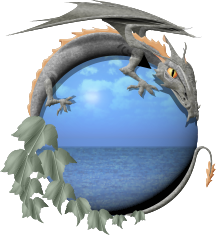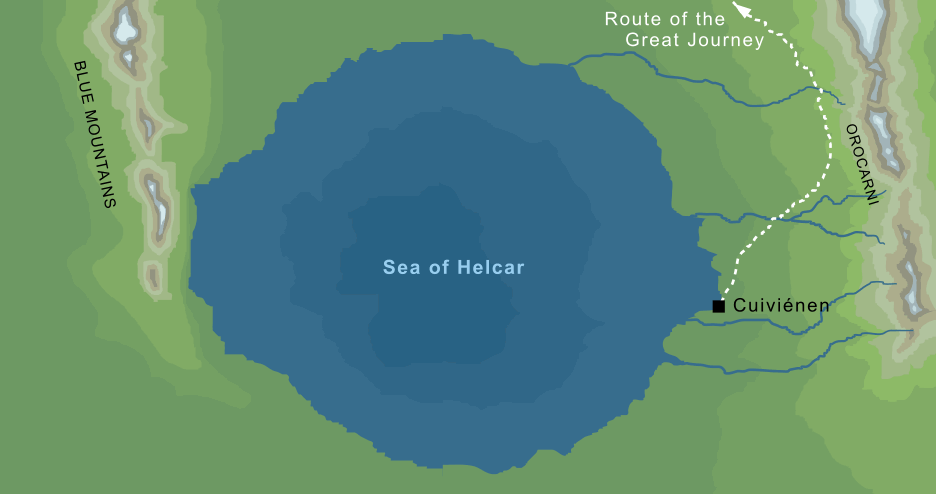- Cities and buildings
- Fields, plains and deserts
- Forests
- Hills and mountains
- Islands and promontories
- Lands, realms and regions
- Rivers and lakes
- Seas and oceans


 |
||||||
|


Which personality type are you?
Take the Free mydiscprofile Personality Test to discover your core personality and your ideal job.   Which personality type are you? |
|
Location
The north and east of Middle-earth1
Pronunciation
he'lkar (the final 'r' should be distinctly pronounced)
Meaning
Derived from a stem khelek-, meaning 'ice-cold'
Indexes: About this entry:
|
Inland Sea of HelcarAn inland sea in the distant east of Middle-earth
Tolkien's original conception of the Inland Sea of Helcar2
Tolkien's original conception of the Inland Sea of Helcar2
A large inland sea in the east of ancient Middle-earth, roughly elliptical in shape. On its eastern shoreline lay the mountains of the Orocarni, and at their feet on a small bay was the land Cuiviénen, where the first Elves awoke in Middle-earth. It was there that Oromë discovered them, and ultimately led many of them on a Great Journey around the northern end of the Sea of Helcar as they set out for Valinor in the distant west. Notes
See also...Cuiviénen, Elves, Illuin, Inner Seas, Lamps of the Valar, Orocarni, Rhûn, Water of Awakening Indexes: About this entry:
For acknowledgements and references, see the Disclaimer & Bibliography page. Original content © copyright Mark Fisher 1998, 2001-2002, 2007-2008. All rights reserved. For conditions of reuse, see the Site FAQ. Website services kindly sponsored by myDISCprofile, the free online personality test.How do your personal strengths fit in with career matching? How can you identify them? Try a free personality test from myDISCprofile. |